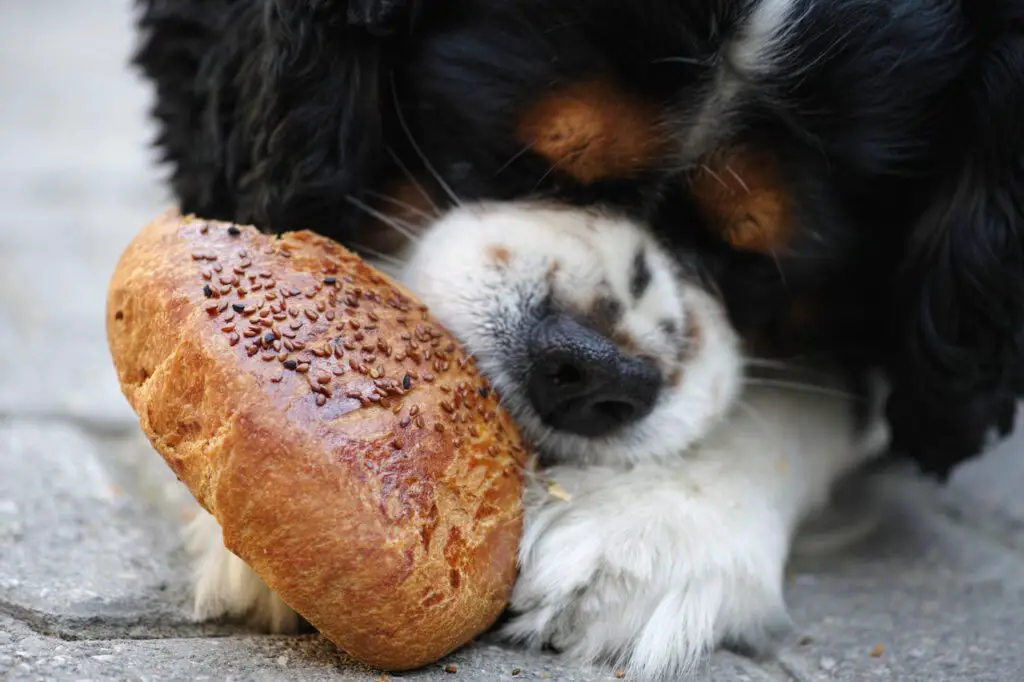Dogs are fascinating creatures with unique behaviors that sometimes leave us puzzled. One curious behavior that dog owners often notice is their tendency to hide treats.
You might have witnessed your dog burying a bone in the backyard or carefully stashing a chew toy under the couch. But why do dogs hide their treats?
In this article, we will explore ten possible reasons behind why do dogs hide their treats and provide you with five strategies to help prevent it.
10 Basic Reasons Why do dogs hide their treats
1. Instinctual Behavior
Dogs have inherited certain behaviors from their wild ancestors. One such behavior is caching or hiding food. Wild canids would often hide their prey to secure it for later consumption, and although our domesticated dogs no longer need to hunt, this instinct can still be present.
2. Safety and Security
Dogs may hide their treats as a way to protect them from potential theft. Just like squirrels bury acorns, dogs stash their goodies to ensure they have a future source of nourishment.
3. Sensory Appeal
Dogs have a highly developed sense of smell. By hiding their treats, they can enjoy the scent for an extended period. It’s like having a delightful aroma waiting for them whenever they desire.
4. Bore and Need Entertainment
Dogs are intelligent creatures and need mental stimulation. Hiding treats provides them with a fun and challenging activity. They enjoy the thrill of searching for and uncovering their hidden treasures.
5. Unfavorable Environment
Dogs may hide their treats if they feel uncomfortable or unsafe in their surroundings. This behavior allows them to keep their valued items in a place they consider secure.
6. Scarcity Mentality
Some dogs might have experienced food scarcity in the past, either before being adopted or due to previous neglect. Hiding treats could be a result of their instinct to ensure they have enough food for later.
7. Protective Behavior
If your dog is in a multi-dog household, they might hide their treats to prevent other dogs from stealing them. It’s their way of guarding their resources and ensuring they have something special for themselves.
8. Keep it for Later
Dogs are capable of delaying gratification. They might hide their treats as a form of self-control, knowing that they will get rewarded later when they discover and enjoy their hidden treats.
9. Nesting Instinct
Some dogs have a nesting instinct, similar to that of birds. They might bury or hide their treats as a way of creating a cozy den or safe space.
10. A Lot of Hunger
,Dogs might hide their treats because they are not hungry at the moment. They prefer saving the treats for a time when their appetite returns.
5 Preventing Tips Why Do Dogs Hide Their Treats
1. Change Their Routine
Dogs thrive on routine and structure. By establishing regular feeding times, you can help reduce the urge for your dog to hide treats. Consistent meal schedules can create a sense of security and predictability.
2. Provide Enough Food
Ensure your dog is getting a balanced diet with sufficient food. If they feel well-fed and satisfied, the need to hide treats might decrease.
3. Engage in healthy Activities
Engage your dog in various activities to keep their minds stimulated and their bodies active. Puzzle toys, interactive games, and regular exercise can help alleviate boredom and decrease the need to hide treats.
4. Teach Sharing and Respect
If you have multiple dogs, teach them to share and respect each other’s belongings. Provide separate spaces for each dog during treat time to avoid conflicts and reduce the need for hiding.
5. Positive Reinforcement
Reward your dog immediately after they receive a treat, so they learn to associate eating with enjoyment. This can help prevent them from feeling the need to hide treats for later.
Frequently Asked Questions (faqs)
Q1: Is it normal for dogs to hide their treats?
Yes, it is a common behavior for dogs to hide their treats. They may do so for various reasons, including instinctual behavior, safety, sensory appeal, boredom, and scarcity mentality.
Q2: How can I stop my dog from hiding treats?
To prevent your dog from hiding treats, establish a routine, provide enough food, engage in enrichment activities, teach sharing and respect, and use positive reinforcement.
Q3: Can hiding treats be a sign of a health issue?
In some cases, hiding treats excessively or compulsively could be a sign of an underlying health issue. If you notice any unusual behavior or changes in your dog’s eating habits, it’s best to consult with a veterinarian.
Q4: Should I let my dog hide treats?
Allowing your dog to hide treats can be a natural and mentally stimulating activity. However, if it becomes excessive or leads to problems with resource guarding or territorial behavior, it may be necessary to intervene and modify the behavior.
Q5: What should I do if my dog hides treats in inappropriate places?
If your dog consistently hides treats in inappropriate places (e.g., on the couch or in your shoes), redirect their behavior to an acceptable location. Provide them with appropriate hiding spots, such as puzzle toys or designated areas where they can safely bury their treats.
Conclusion
Understanding why do dogs hide their treats can help us appreciate their natural instincts and behaviors. From their instinctual caching behavior to a desire for security and sensory enjoyment, dogs have their reasons.
By implementing the strategies mentioned in this article, you can create a happy and fulfilling environment for your furry friend while preventing any potential issues related to treat hiding.
Remember, each dog is unique, and observing their behavior and needs will guide you in finding the best approach for them.


